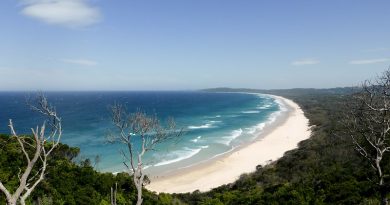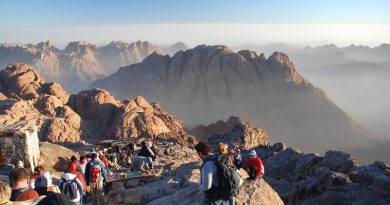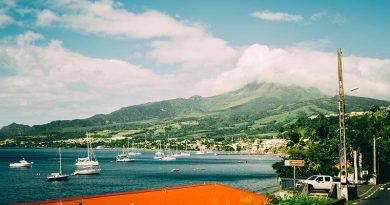The Eiffel Tower: The Tower to Top all Towers
Where: Paris, France
When: All year round, closes during difficult weather conditions.
What: One of Paris’ most iconic buildings with dizzying views over the city. Just don’t try to throw a penny off the side!
Remember to bring: Binoculars and your loved one!
The Eiffel Tower is undoubtedly Paris’ most famous attraction and one of the most recognisable structures in the entire world. An iron lattice tower soaring up to over 320 metres (1050 feet) tall, it was the tallest man-made structure in the world for 41 years before being surpassed by the Chrysler Building in New York. The Eiffel Tower was erected on 31 March 1889 and named after French engineer Gustav Eiffel.
Watch Justine Shapiro and Adela Ucar reveal their reasons why Paris is one of their favourite cities:
Origin
The tower came out of a desire to win a competition based on building a centrepiece for the 1889 Exposition Universelle, a French World Fair meant to commemorate the 100th anniversary of the French Revolution. The two original engineers for the tower were actually Maurice Koechlin and Emile Nouguier, and Koechlin was responsible for the first official sketch of the tower. Initially, the now famous Gustav Eiffel had little interest in the tower, but later became the main supporter of it once seeing the design develop into a more intricate tower with intricate, decorative arches and a glass pavilion towards the bottom of the tower.
Eiffel, once fully committed to the project, presented plans for the tower to the Societe des Ingienieurs Civils and explained that it would be a symbol of France’s gratitude for the revolution as well as a monument to the scientific movement that was now fully in swing.
On 8 January 1887, Eiffel got full permission and funding to start the tower and by the end of March 1889, it was ready to be presented at the Exposition. The tower was immensely popular once being opened to the public and by the end of the exhibition, almost two million people had visited.
The tower was only supposed to be up for 20 years as part of the rules for the competition included being easily demolished. However, the City recognised how valuable it was for communication and it was allowed to stay. Since then, the tower has been regularly modified, renovated, and changed to fit the needs of its growing number of visitors.
Who was Gustav Eiffel?
Gustav Eiffel, the namesake behind the monument, was the man responsible for the Eiffel Tower’s creation. Eiffel was born in Dijon in 1832 and after spending many years in the South West of France supervising construction on a railway bridge, he set up his own company that dealt with metal structural work.
Eiffel created hundreds of metal structures throughout his life, some of which include the twin edifices of the Porto viaduct and the Garabit viaduct. He was also responsible for the structure of the Statue of Liberty.
The Eiffel Tower, which of course he is most famously known for, was the project he ended his career on. Knowing that the tower only had a contract for twenty years, Eiffel searched for a way to keep it standing and thus began using it for wind resistance experiments and meteorological observations which gave it practical purpose and reasons to stay up. Aside from those two uses, the tower was and is still mostly used as an antenna.
He devoted the last thirty years of his life to his experiments and spent much of his time in his apartment at the very top of the tower. Eiffel died at the age of 91, leaving behind a plethora of work and architectural influence that is still studied today.
Best time to visit
Of course, it’s always preferable to visit the tower when the crowds are as small as possible. However, crowds thin from October to March, which also coincides with the colder and more overcast months of the year, so you may not be able to see the stunning city as clearly as you would during the other months.
It’s also recommended to visit early in the day and avoid weekends; generally there will be less people queuing up.
Preparing for your visit
Always, always book in advance. You can book online at the Eiffel Tower’s website and that way you can avoid long lines. If you aren’t able to book in advance, the ticket booths are right at the feet of the pillars of the Tower. Alternatively, have a look on Twitter for real-time news. Just search for updates on the tower itself from visitors.
You can also purchase different kinds of tour packages, some of which include access to the tower as well as a scenic river cruise along the Seine. Others will grant you access to the tower and some behind the scenes areas complete with a guide who will talk you through the tour.
Tickets generally range from 5 to 15 euros, depending on how much of the tower you want to see. There are also discounts for seniors and children.
Check the official website for exact prices and opening times, as they change seasonally.
Getting to the Tower
The tower is pretty hard to miss. It lies on the Champ de Mars and many trains and buses will take you right there.
There are three main areas you’ll want to visit: the first, second, and third floors, each of which offers different sights and stops.
First Floor:
Currently, the first floor hosts a tour-exhibition that will give you a look into the creation and secrets of the tower. Visit the 58 Tour Eiffel Restaurant, the souvenir shop, and the Cineiffel, which showcases multimedia art based on the tower.
Second Floor:
Visit the Jules Verne Restaurant for some modern French cuisine and then take a look at the story window which offers more history about the unique tower lifts. Also, the second floor is the ideal floor for taking beautiful photos, as you get a full circular view of the city.
Third Floor:
Take the famous lifts up to the very top and you’ll find plenty of space to explore and wander, taking in the breathtaking and one of a kind look at the city. Make your way into Gustave Eiffel’s office and you can see the space just as it looked during his time there.
And finally, finish off your visit with a glass of champagne at the bar to commemorate your journey to the top.
More Information
For individuals:
Tel: 33(0)8 92 701 239
Open Monday-Saturday, 9:00 am to 7:00 pm
For groups:
Tel: 33(0)8 92 700 016
Website:
By Tiffany Mascarenhas




